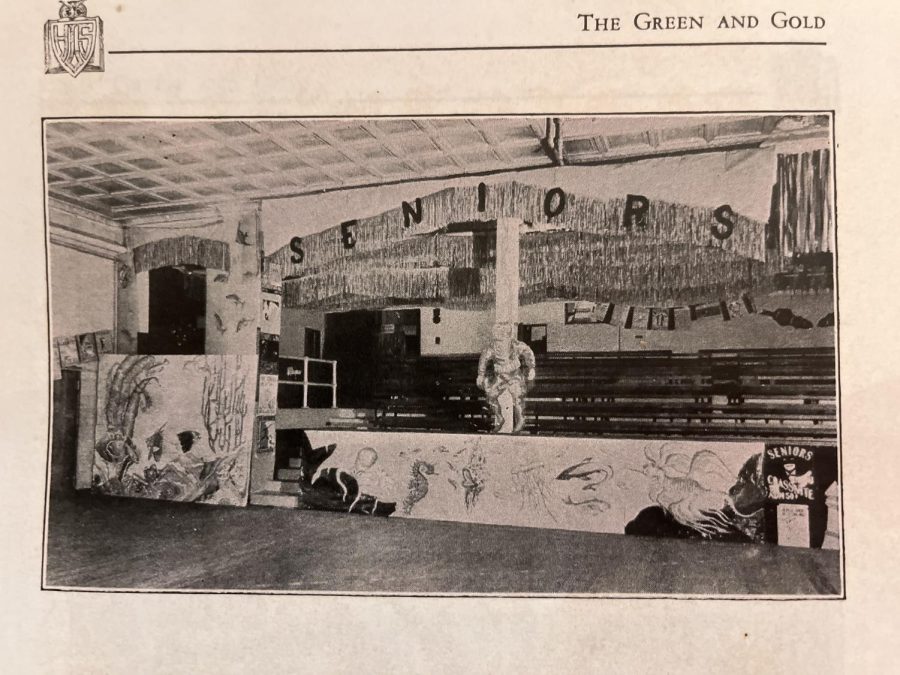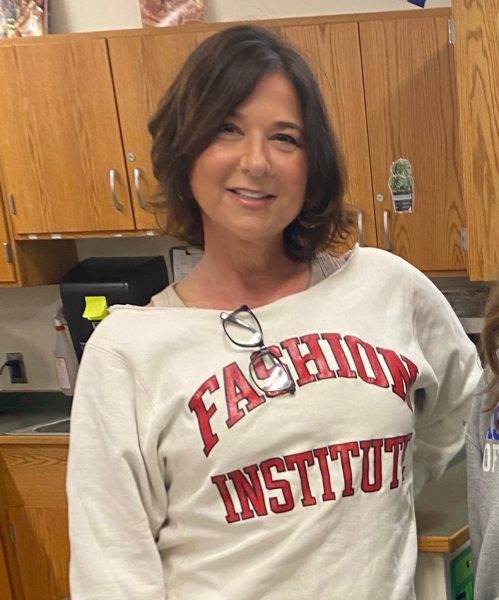Coming Up on Centennial: 98 Years of Class Night
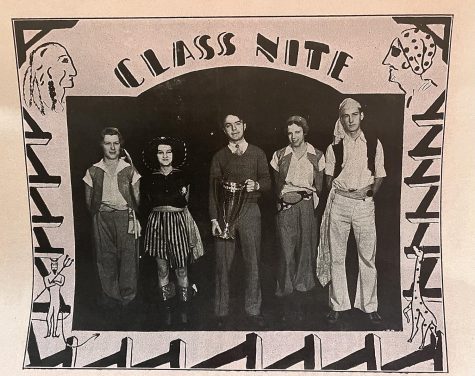
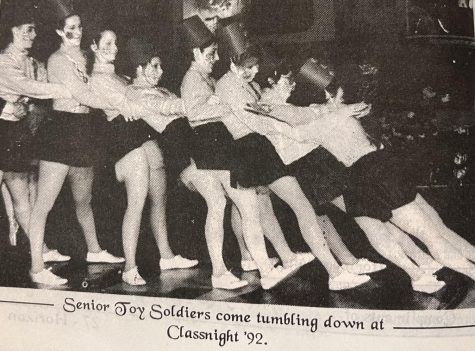
The year was 1924, five decades before the passage of Title IX of the Education Amendments Act granting equality to girls in sports. The LHS girls’ basketball team, in its infancy, approached the Lynbrook Athletic Department with a request for updated equipment. Their request was denied because “the cost of equipment was more than the general organization boasted of,” according to LHS student Anthony Perrusi in a 1929 edition of the school newspaper, The Green and Gold.
Desperate for a new way to raise funds, the girls’ basketball team had a stroke of genius: why not hold a “Class Night,” a four-grade competition consisting of various categories, and collect funds from the event?
The idea was a success, and the girls’ basketball team raised enough money to fully equip their needs. The following year, with that original “Class Night” just a distant memory of an athletic fundraiser, the school held a gymnastics exhibition, instead. The students, however, were not satisfied – they wanted another “Class Night”!
Considering fundraising was no longer a primary objective, Director of Physical Education J.J. Carter decided to rebrand Class Night 1926 as a social event for students, with the simple goal of enjoyment. Participants were scored based on five categories: basketball, decorations, refreshments, ticket setting, and cheering.
The event was held in what is now the gymnasium of the Kindergarten Center, right across the street from the present-day high school. Each grade claimed a corner of the gym to set up decorations. Decked out in tinsel, ribbon, wallpaper, and class spirit, the room was a proud display of Class Night’s ability to bring LHS students together in fierce, yet friendly, competition.
Many agreed that the event’s success derived partly from the opportunity it provided for students, even those who did not qualify to make the varsity team, to participate in basketball; additionally, it was an entirely student-run process, with varsity basketball players taking the role of coach and officiating the games. From the start, Class Night promoted inclusion and fun for all students, and this is reflected in its success and longevity.
In 1928, with Class Night growing in size and popularity, Harry’s Shoe Shop offered an accolade for the year’s winner: a Class Night cup. That year and each year preceding, the cup has been awarded to the first-place winner and inscribed with their graduating year. The trophy remains the prize of Class Night to this day, and is displayed proudly in the office of Assistant Principal, “Master of Class Night Ceremonies”, Matthew Sarosy.
The original Class Night evolved throughout the Roaring Twenties, and in the latter years of the decade, drama became a key part of the event. Dramatic Class Night, as it was called then, was judged on four factors: posters, tickets, plays, and specialties. The first-ever class skits, in 1929, were eclectic and did not adhere to a single theme, as is the tradition today; they were titled “Punk,” “The Trunk from India,” “The Professor of Love,” and “The Wonder Hat.”
“Here’s to Dramatic Class Night!!” wrote Perussi in the ‘29 edition of The Green and Gold. “Long may it exist as one of the most thrilling school activities!”
Class Night – which, in line with its vibrant nonconformity, came to be spelled “Class Nite” for some time – grew more spectacular with each passing year. The Class of 1932 became the first, and last, grade to sweep the Class Night win for four consecutive years. In 1934, on its 10th anniversary, more than 1,500 cheering parents and students came to watch the competition unfold.
“It’s only eight o’clock, folks, but already a huge crowd has gathered to witness this colorful spectacle,” announced a radio host on a 1938 W.P.F. broadcast of the Class Night event. “Colorful is the word for it this year all right.”
Describing each grade’s themed decorations, the broadcaster said, “The seniors have turned their corner into a gypsy encampment, complete with prophets, campfires, etc. The sophs can undoubtedly supply you with farmland. The frosh have outdone themselves by setting up a babyland complete with baby cars, balloons, and hair ribbons.”
Other competitive relays came and went throughout the years, including rope climbing, wrestling, folk dancing, tug-o-war, and volleyball. In the 1940s, a trivia competition was temporarily added to the scoresheet, and in the 1950s, decorative backboards began to display more sophisticated mechanical automation.
The event expanded from one night, to two, to three, and in 1979, it became so boisterous that Lynbrook administrators threatened to cancel it on account of “rowdiness.” Class Night has been canceled three times in its 98-year existence – in 1925, the reason unknown; in 1977 because of “kidnapping and vandalism”; and in 1979 due to a “lack of facilities to hold events,” according to a 1992 issue of the school newspaper, retitled Horizon. Despite dramatic protests at Board of Education meetings, upset students and parents failed to reverse these cancellations.
Even the COVID-19 pandemic could not put a stop to Class Night. In 2020, the night event was canceled at the last minute; however, the day show still went on. In 2021, a modified Class Night was held with only LHS students present, no community members allowed to attend in order to prevent a COVID outbreak. Nonetheless, the tradition was held through incredible adversity.
According to the 1992 Horizon souvenir magazine that celebrated the centennial anniversary of the Lynbrook schools, class advisors were added to maintain Class Night’s propriety in 1978. The ‘80s saw a greater emphasis placed on the dance and skit categories, with each grade’s show becoming more and more elaborate in its themed festivities. Skits were moved from the auditorium to the gymnasium stage, and then from the stage to the gym floor in 1986. The first tie took place in 1990 between the junior and senior classes, the same year that backboards were added to the scoresheet.
Director of the LHS English Department Mary Kirby has a rich history with Class Night. She graduated LHS in 1991, was a Class Night chairperson throughout her four years in the school, and has been a Class Night advisor for several years.
“Having been able to be a part of Class Night through every stage of my life, most importantly as a mother and educator, I have seen how truly magical the tradition is,” Kirby said. “It’s about learning who you are, what you’re capable of, setting goals, and working together to achieve them. With Class Night, LHS students create memories, and skills, for a lifetime.”
Thirty years later, Class Night remains LHS’s and the Lynbrook community’s most anticipated event of the year. The competition is now scored on artwork (banner and box), scenery, skit, and dances (boys’ dance, girls’ dance, and kickline dance). The points from the one-night event are added to the points earned from the Homecoming banner and Sports Night athletic competitions in order to determine the winner.
The excitement, competitive spirit, and sentimentality of tradition of Class Night never fails to amaze the families of Lynbrook.
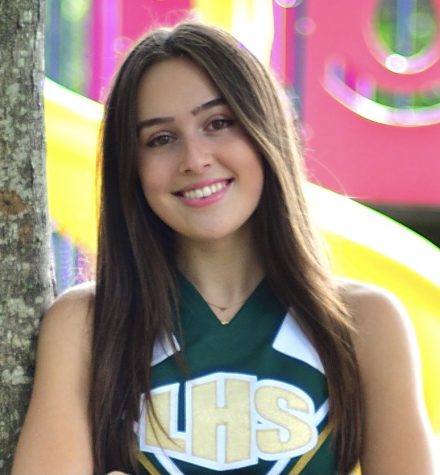
I am the editor-in-chief of the Horizon newspaper and a member of the Class of 2022. I am also the captain of the LHS Speech, Debate, and Model Congress...
















